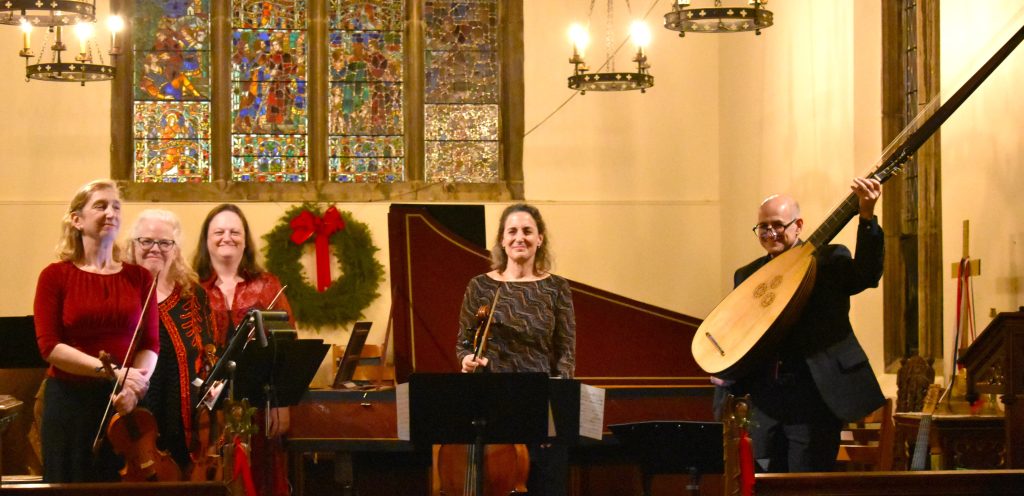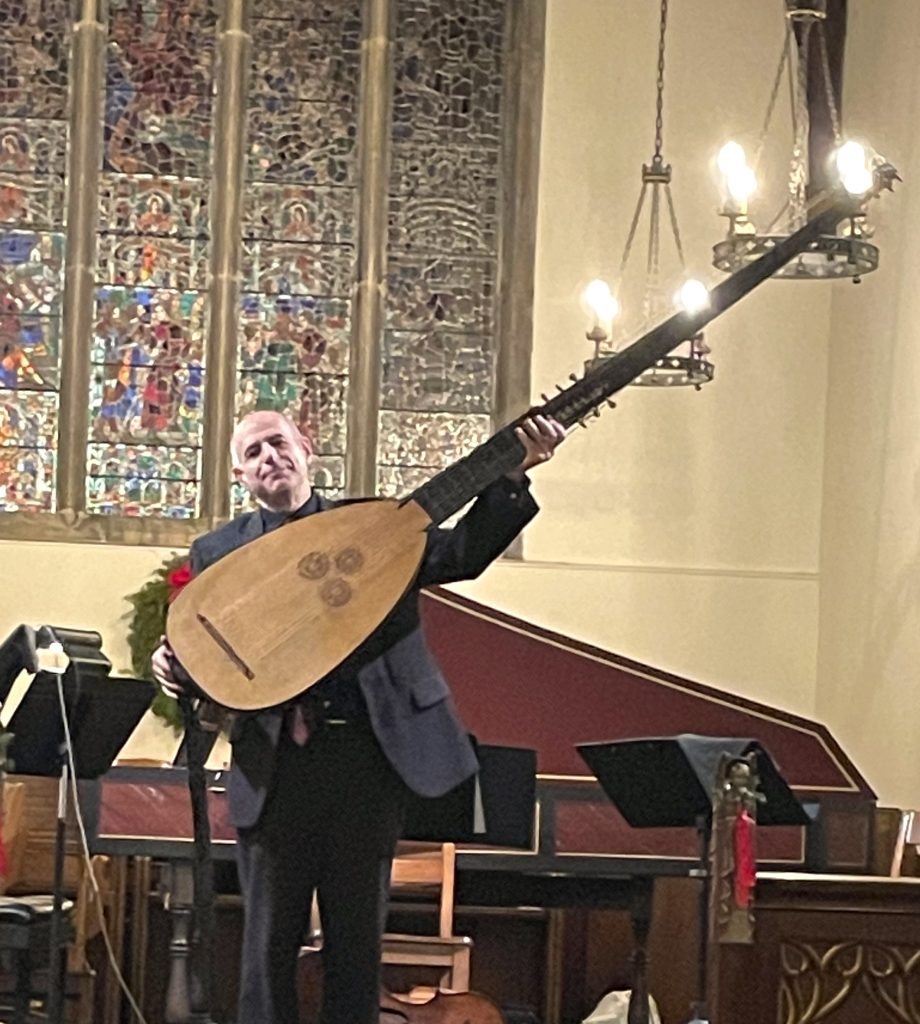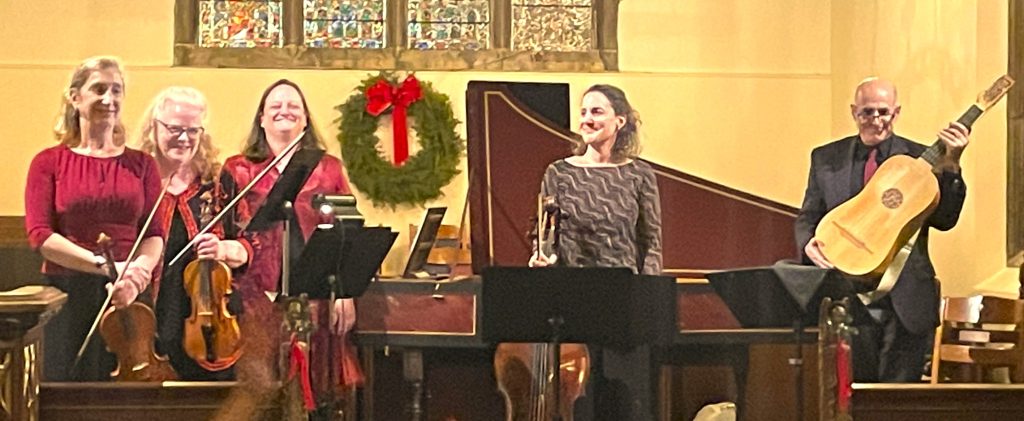
by Kevin T McEneaney
For the annual Christmas concert at the Episcopal high school, The Vivaldi Project, a Baroque ensemble, played rarely performed Baroque works in All-Saint’s Chapel, which features superior acoustics. Ned Reade Emceed the event.
They opened with Sonata opus 16, no. 9 in C major (1693) by Isabella Leonarda (1620-1704). She is the first documented female composer of the Baroque era who has left a considerable body of work. This cheerful work in three movements offered a warm and welcoming ambiance.
Ad guadia ad jubila à voce sola, con duoi Violini (1675) by Maria Xaveria Peruchona, a convent nun followed. Soprano Laurie Himes sang with high finesse about Luke’s charming autochthonous myth of the new-born baby (whose biological father has never been identified) in straw bedding as the earth and heavens rejoiced. I think the imagined joy of giving birth has been more successfully expressed by women who never gave birth! The welcome addition of harpsichord accompaniment by Jennifer Streeter provided amplification of the spiritual ambiance to the densely and warmly chiseled Latin text.
We next travelled to England to hear Sonata in A minor, no. 3, Z, 804 (circa 1680) by Henry Purcell. This delightful work featured a tune that Antonio Vivaldi would later exploit to great effect in his music. Although Purcell was a giant of the era, his work remains rarely performed, so I felt this extraordinary composition to be one of the concert’s highlights as it was well-performed by the whole ensemble, especially by lead violinist Elizabeth Field.

A 1732 liturgical piece by Georg Philip Telemann (whose work I consider ambulatory rather than racing) featured Heimes singing of the brutal and illegal crucifixion of the famous rabbi from Nazareth. I was puzzled by this selection, which was better than most of Telemann’s work, which is most likely why it was selected. Here Stephanie Vial on cello was outstanding.
The last work before intermission was Sonata a tre, opus 1, no. 12 by Antonio Vivaldi. This was a piece known as Folia, interesting as an early example by the composer. Although we have about 500 pieces of music by Vivaldi that is likely to be only about one-quarter of his output. Vivaldi never wrote for guitar (which was popular in Ireland, England, and Spain), yet every accomplished guitarist wants to perform Vivaldi, and there are many such recordings available. William Simms had abandoned his long-necked theorbo (god-bow) to race his fingers through his guitar at such astonishing speed and nuance that it made me feel like I should rise and dance in the aisle! (The first known venue for a public performance by Vivaldi occurred at the age of nine at the church of San Marco in 1696 when he played as an extra violinist in his father’s ensemble.)

Simms delivered an oral history of the theorbo and performed an extended solo in two movements (1623) by the lute composer Alessandro Piccinini. The two movements Simms played presented an impressive range of sound wider than I thought the theorbo could achieve. I had never heard such an extended work on this instrument before and for the first time I realized that the instrument was aptly named.
Sonata in C minor, Wq. 161 (1749) by Carl Philipp Emanuel Bach presented an amusing party piece, a musical dialogue between Sanguineus und Melancholicus. This composition was a see-saw between happiness and misery, optimism and pessimism, which romped and frolicked with amusing characterization. I had always thought CPE Bach to be quite witty, yet this outrageous party piece was a most amusing revelation, which functioned as the concert’s crescendo. Both violinists, Elizabeth Field and Allison Nyquist, delivered delicious spontaneity.
Heimes took center stage once more to deliver her impressive voice in Georg Friderich Handel’s six-part Gloria in excelsis Deo, HWV deest (circa 1707 when Handel was in Rome), which only became a noted favorite when it was re-discovered in 2001; this early work is a prime example of Handel’s early operatic inclination in combination with strings that freight strong rhythm—a fitting finale for this extravagant evening!

This concert offered a diverse sampling of unusual virtuoso works by an array of different composers: religious, secular, serious, humorous with an array of different instruments, sometimes enhancing the original orchestrations with period sensibility. Extensive program notes by cellist Stephanie Vial assisted comprehension and context of the works performed.